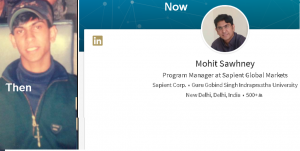I recently met a Scrum Master friend who told me how he eventually figured out that the dip in performance of one of his Scrum team members was linked to a co-worker’s body odor!
Yes, a Scrum Master does everything and anything to help the team in doing what they are supposed to do – that is advancing the Sprint’s story towards completion!
Let’s take a look at the definition of a Scrum Master. Scrum Master is a person who facilitates the Scrum team in performing their tasks. He helps resolve the team’s blockers. These blockers could be directly related to their work – such as the team struggling to decide the design approach to take to go forward, or indirectly impeding them – such as environment outages or even excessive noise coming from the neighboring team area.
In order to justify the role of a Scrum Master, the person needs to possess the following skills:
SCRUM MASTER’S MOST IMPORTANT HARD SKILL:
- Understanding of Agile and Scrum: This is the key hard skill as a Scrum Master. Having access to an Agile Coach can help gain this skill rather quickly, but if that’s not possible, observing an existing Scrum team will also help. Those are the most practical ways in my view but taking a certification such as PMI ACP or CSM is the next best thing that can help gain the required knowledge and confidence to perform the role. Joining forums where Scrum and Agile is discussed is also quite beneficial to grasp the nuances of Scrum and Agile.
SCRUM MASTER’S MOST IMPORTANT SOFT SKILLS:
- Emotional Intelligence: A Scrum Master listens not only to what is being said but also to what is not said. He constantly works towards identifying the elephant in the room – team dynamics, personal constraints, process gaps – and then addressing them. He finds creative ways to change the status-quo, in creating healthy processes and achieving team collaboration.
- Resourcefulness: Scrum Master is not required to be a technical person. Neither is he required to be a functional domain expert. However, he should know who to approach to help address the impediments being faced by the team. He maintains a good relationships with the stakeholders and knows when and how should the topic be brought up for discussion.
Those were the general qualities of a Scrum Master. However, considering that most Scrum Masters have evolved from other roles, it is important to understand what must a person keep in mind when moving into Scrum Master shoes from a traditional PM, Tech lead, or QA Manager role.
In such a case, a mindset shift is required to not let their former experience come in the way of their new role. It requires a focus towards failing fast, creating a minimum viable product and increased team collaboration. Scrum Team can get into serious issues if this point is ignored while moving to a Scrum Master role. Some such real life examples include:
- Scrum Master who was previously a Project Manager could push towards having and following a detailed project plan. To add to that, he may be too aggressive and demanding in his role. This will be disastrous since it is antithesis to Agile where Servant Leadership is the key.
- Scrum Master who was earlier a Developer could take up responsibility to write the code himself. Team could get so used to him writing the code that they would ask him to fix production bugs. He would eventually get overwhelmed with work and rather than becoming a team enabler, he would end up becoming a bottleneck.
- Scrum Master who was formerly a Test Lead could get closely involved in testing. In such a situation, the Scrum team would slowly start considering him as the quality gatekeeper and stop appreciating that the quality as a collective team responsibility.
Having said so, if you put your old wine (skills) in the new bottle (of Scrum Mastery), you can win in the role like no on else. Here are some examples of the benefits your previous experience can bring to your new role:
- A Project Manager and a Scrum Master role have a lot in common. Whether it’s prioritization, planning, client demo, lesson learned – they are all present in SCRUM/Agile as well in the form of Backlog Grooming, Sprint Planning, Sprint Demo, and Sprint Retrospectives. Hence, your previous skills will come in handy in Scrum Master role!
- Having a technical background will help you in the Scrum Master role to understand the language spoken by the team. You could also teach and coach the team on technical aspects such as how to design effectively, following coding standards and unit testing practices.
- QA / testing experience can also be very favorable to you in the Scrum Master role. Test Leads or other such roles understand the end to end development process, are good at stakeholder management and causal analysis. They talk to Developers, Business, Business Analysts and traditional Production Support teams to determine and address the root causes of the issues. These are directly required in the Scrum Master role as well.
Question:
Do you agree with the above qualities as key to perform the Scrum Master role successfully. Would you like to add anything else to the list?
![Do You Have What It Takes To Be A Scrum Master? [Scrum Master Series]](http://www.mohitsawhney.com/wp-content/uploads/2018/02/lounge-empreendedor-cliente-tem-sempre-razao1.jpg)



